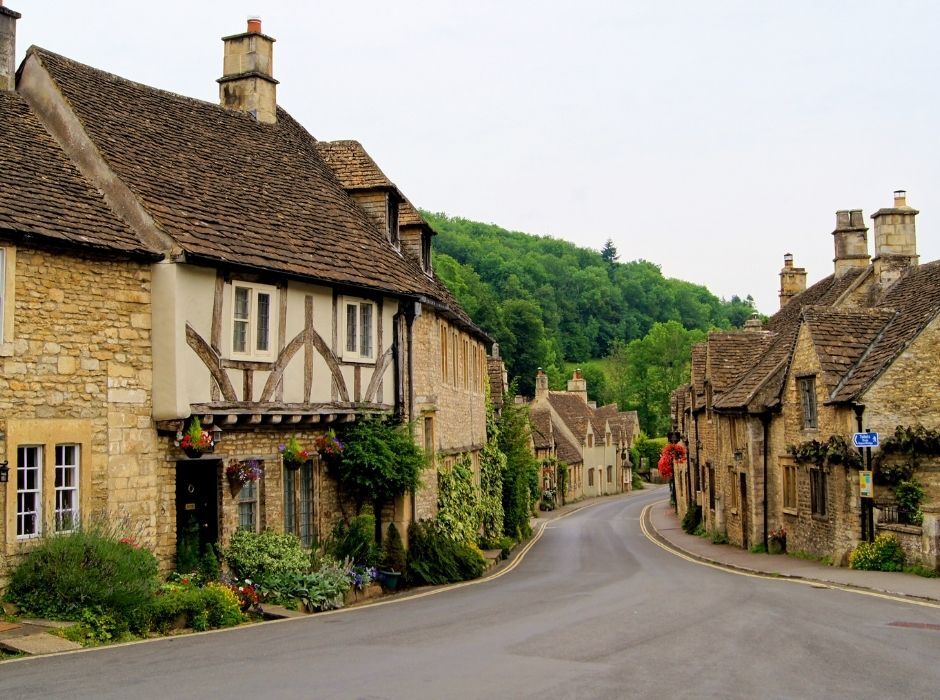Posted on July 09, 2021

As if plucked straight from the pages of a storybook, the unique, honey-hued Cotswold cottages and architecture are truly iconic. Year after year, visitors are drawn to The Cotswolds to experience a bygone era and admire pretty houses set in the idyllic English countryside. Unspoilt and full of character, this region of the UK is cherished not only nationally but across the world. However very few actually know the history behind the architecture they come to gaze upon.
The Cotswolds has been through a number of changes over 3000 years of civilisation. During the Medieval Ages, the region flourished for its wool trade and many of the mills and structures from that age still exist today. Across the villages and towns, you can also find evidence of the Roman occupancy with historic Roman and Romano-British villas, Saxon chapels and stunning cathedrals which are glorious works of architecture to admire in their own right.
However those storybook stone cottages that most visitors come for, date back as far at the 16th century and are closely linked to the typical Tudor style of housing. Think steep roofs, wooden beams and stone chimneys. However buildings in The Cotswolds evolved into something particularly special due to the local, world-renowned Cotswold stone which give them that rich, honey tone.
Cotswold stone has been used in building structures across the Cotswolds as early as the Saxon period. A golden-coloured jurassic limestone, the history of the bedrock lying beneath the Cotswolds’ rolling hills itself is in itself, amazing. The unique colour and texture of the stone is a result of ancient marine life remains being fossilised and compressed over millions of years.
So while the look and feel of the Cotswold cottage ignites memories of days of olde or something reminiscent of childhood fairytales, the history embedded in the architecture dates back a millennia, and only adds to the character of the original stone buildings you see across this Area of Outstanding Natural Beauty.
The best villages to admire The Cotswolds Stone Cottage
Lower Slaughter
The name ‘Lower Slaughter’ stems from the Old English word ‘slothre’ meaning ‘muddy place’ - however you won’t find much mud in this charming little village. You will find though quaint little cottages and an abundance of honey-coloured stone architecture. Make sure you visit Copse Hill Road which has been voted the most romantic street in Britain, perfect for that fairytale stroll.
Kingham
Kingham was voted ‘England’s Favourite Village’ in 2006 and with rows upon rows of unspoilt Cotswold stone cottages and open village greens. This little village represents a community you’d expect to find in any storybook and is the archetype of a typical English village.
Bibury
Once described by William Morris as ‘the most beautiful village in England’, the chocolate box village of Bibury is one of England’s most iconic hamlets and home to Arlington Row, the most photographed houses in the country. A collection of 14th century weaver’s cottages, these little houses are probably what pop up in your mind when you think of typical Cotswolds cottages.
Castle Combe
If you’re looking for a typical Cotswold village with limestone cottages, floral hanging baskets and stone-tiled roofs, Castle Combe is the place to go! The Town Bridge in the village is one of the most photographed places in The Cotswolds and the classic view is from across the bridge by the old weavers’ cottages, looking up Water Street.
Fully appreciate these beautiful Cotswold cottages
The best way to explore these honey-hued homes, their individual quirks and experience their history first-hand? Organise a Cotswolds cottage staycation! You can read our journal post where we share the most beautiful cottages in The Cotswolds for a staycation here.